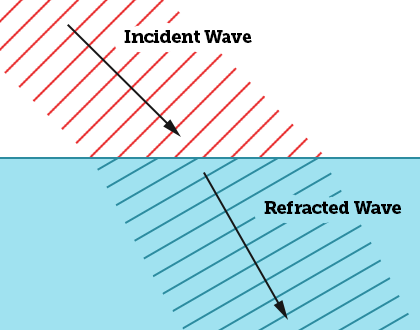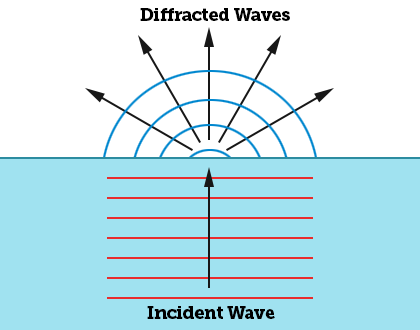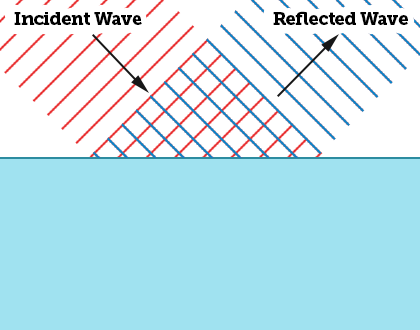Swell Direction and Coastline
During the Northern Hemisphere winter, the northern shores of the Hawaiian Islands is a surfer's paradise. The near perfect surfing conditions are possible due to the swell created by storms in the Pacific Ocean, north of the island. However, the southern shores of the islands remain relatively calm. This example illustrates the importance of the swell direction or the direction from which the swell is coming.
When waves encounter a boundary, such as a reef, island, seawall or other type obstruction, their properties can change. These properties include the direction of propagation, speed, frequency, and energy.
Wave Refraction - Most waves approach the shoreline at an angle. As they travel into shallower water, they slow down and bend due to changes in the bottom depth. This bending is called refraction. The waves refract in shapes that mirror the bathymetry and will break parallel to the coast.

Wave Diffraction - Diffraction occurs when a swell changes direction when encountering a barrier or passing through an opening. The size of the wavelength and barrier impact the appearance of how much the waves bend around the area.

Wave Reflection - Wave reflection is the processes of waves bouncing off a hard surface. The angle of incidence and the angle of reflection are equal, based on a perpendicular line to the coast. Generally, the energy, frequency, period and speed of the wave are not impacted by this reflection.
